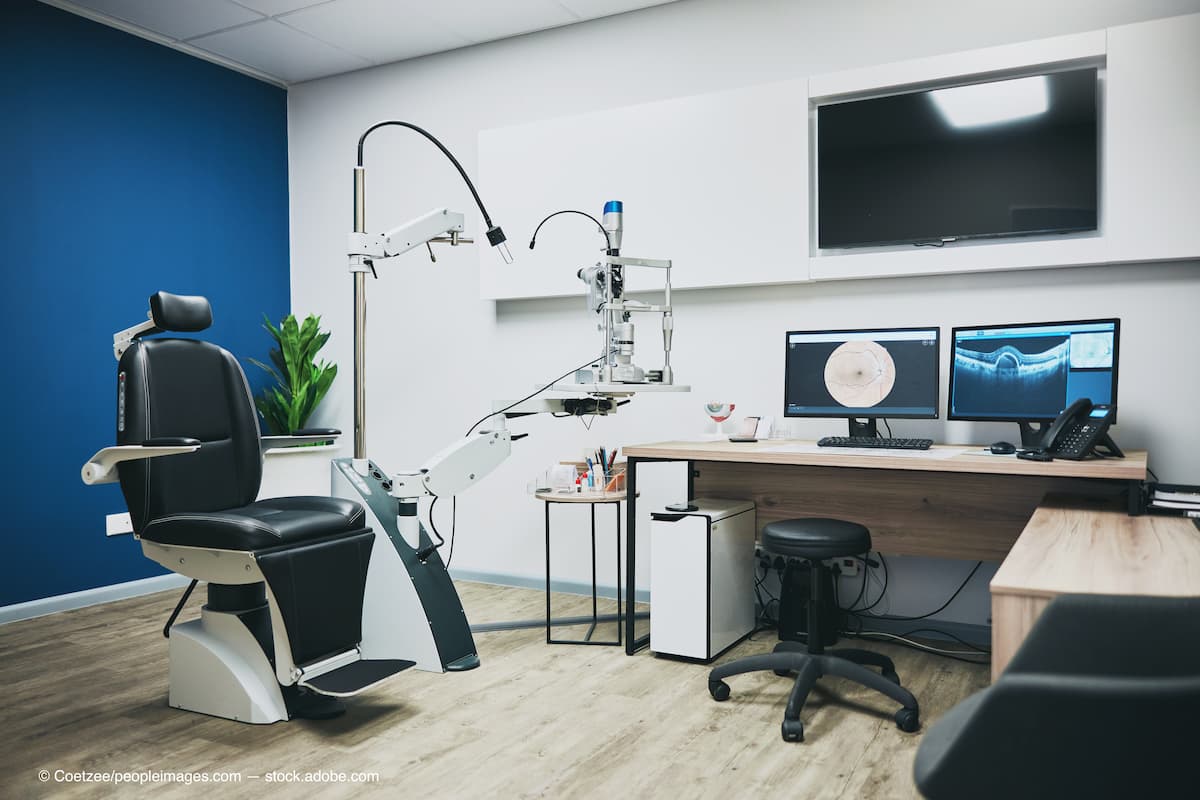A funny thing happened at the office: Part 2
Lessons learned from the exam room.
(Adobe Stock / Coetzee/peopleimages.com)

Who doesn’t love a good joke? One definition of funny is “strange or odd,” and we’ve all got our strange tales from the exam room. Here are a couple of mine and what I learned from them.
Referral quandary
An older patient in a nursing home with advanced dementia presented for examination with a history of retinal detachment OD, which had been surgically repaired. Entrance testing revealed a relative afferent pupillary defect OD, with no detectable response to direct light; aversion to occlusion OS; and fix-and-follow visual acuity OS, with no similar response OD. The clinical examination was challenging, given poor patient fixation, but signs of previous retinal detachment repair were apparent OD, with an acute horseshoe retinal tear present at 6:00 OS. The patient’s caregiver was informed of the eminent threat to the vision in her 1 good eye and the need for an urgent retinal referral, and everything was documented in the chart.
A same-day appointment was scheduled with our retinal specialist, but the patient’s family wanted her to see the retinal specialist who had done her previous retinal detachment repair OD. A detailed referral was made, and the appointment was scheduled. Two weeks later, a follow-up letter was received from the retinal clinic’s fellow, thanking me for the referral and stating that the patient had a benign posterior vitreous detachment. What do I do now?
I was confident in my diagnosis and had referred her to the retinal specialist the family requested, but ultimately the patient hadn’t seen that retinal specialist and the diagnosis didn’t agree with mine. Was I liable if something happened? What was the ethical thing to do? I immediately had our staff schedule the patient back with me to repeat the dilated examination to verify the location of the tear. The diagnosis and location was confirmed, now with a cuff of retinal edema present. Now what?
I phoned the retinal fellow who had examined her and tactfully acknowledged that she was a challenge to examine given the dementia and apologized if I hadn’t provided accurate information in my first referral. I then explained that she was back in the office today and that I was still noting a horseshoe tear inferiorly and asked whether he would be willing to take another look, perhaps under sedation. He agreed, so the patient was referred back to their clinic immediately.
About a week later, another letter arrived from the retinal clinic, this time from the chief retinal specialist, again stating the patient had a benign posterior vitreous detachment. Now what? I decided to try to convince her family to get another opinion, even though she’d now seen 3 different doctors. That Wednesday, I returned to the clinic to see that she was back on my schedule.
When I walked into the exam room, her caregiver explained that the patient was now feeling her way down the halls with her hands. Examination confirmed the worst-case scenario: a macula-off retinal detachment OS. There was no other history available, so it was difficult to determine how acute it was, and because it was in her only good eye, she was immediately referred to our retinal specialist, whom I knew would get her taken care of that day. He called me after examining her to confirm the diagnosis and the need for urgent surgery. He also said that he noted a horseshoe retinal tear at 6:00 as the cause. I told him it had been noted before and was referred to the retinal specialist of her family’s choosing, but it had not been seen. He then said the family refused to let him perform surgery, requesting that she return to the other retinal specialist again instead. At this point, she was lost to follow-up from our office.
Despite the unfortunate and unnecessary outcome after being referred for the same condition twice, we did all we could, given the family’s insistence of provider, and the morals of the story remain:
» Communicate clearly and thoroughly with caregivers, family members, and referral network providers
» Document everything appropriately in the patient’s chart
» Know your stuff & stick to your guns when it comes to a diagnosis you believe in
» Never stop advocating for the patient
The touchy-feely teen
Editor's note: This content may be sensitive to some audiences, as it contains mention of sexual assault.
A 15-year-old boy presented as a new patient for contact lens examination while his mother remained in our waiting area. After refraction and posterior segment evaluation, an initial contact lens trial was chosen, and the patient was passed off to a technician for contact lens insertion. After seeing another patient while this occurred, I was about to re-enter the exam room to evaluate the fit when the technician stopped me to say that the patient had touched her inner thigh while she was sitting across from him during insertion and removal training. A second technician happened to be within earshot and said he had done the same thing to her when she was obtaining his autorefraction/autokeratometry readings during the initial workup. Now what?
After calling the patient’s mother into the exam room, I entered with the technician and completed the examination. I then turned to his mother to inform her of what had happened with 2 different staff members, and that such behavior was unacceptable if we were to continue caring for her son. Thankfully, she was as upset as I was and assured me it would not happen again.
The moral here is that it’s critical for our staff to know that we have their back. This unfortunate incident highlighted our office policy that no employee is to be subjected to harassment of any kind, even from patients. This story made the rounds with our staff and provided an instant morale boost.
In conclusion

What are some of your funny (or not-so-funny) moments in the clinic? I’m sure we could fill volumes of books with a countless array of humorous and not-so-humorous anecdotes. Finding the take home messages from each, then sharing them with one another can ensure we handle them as appropriately as possible!

Newsletter
Want more insights like this? Subscribe to Optometry Times and get clinical pearls and practice tips delivered straight to your inbox.